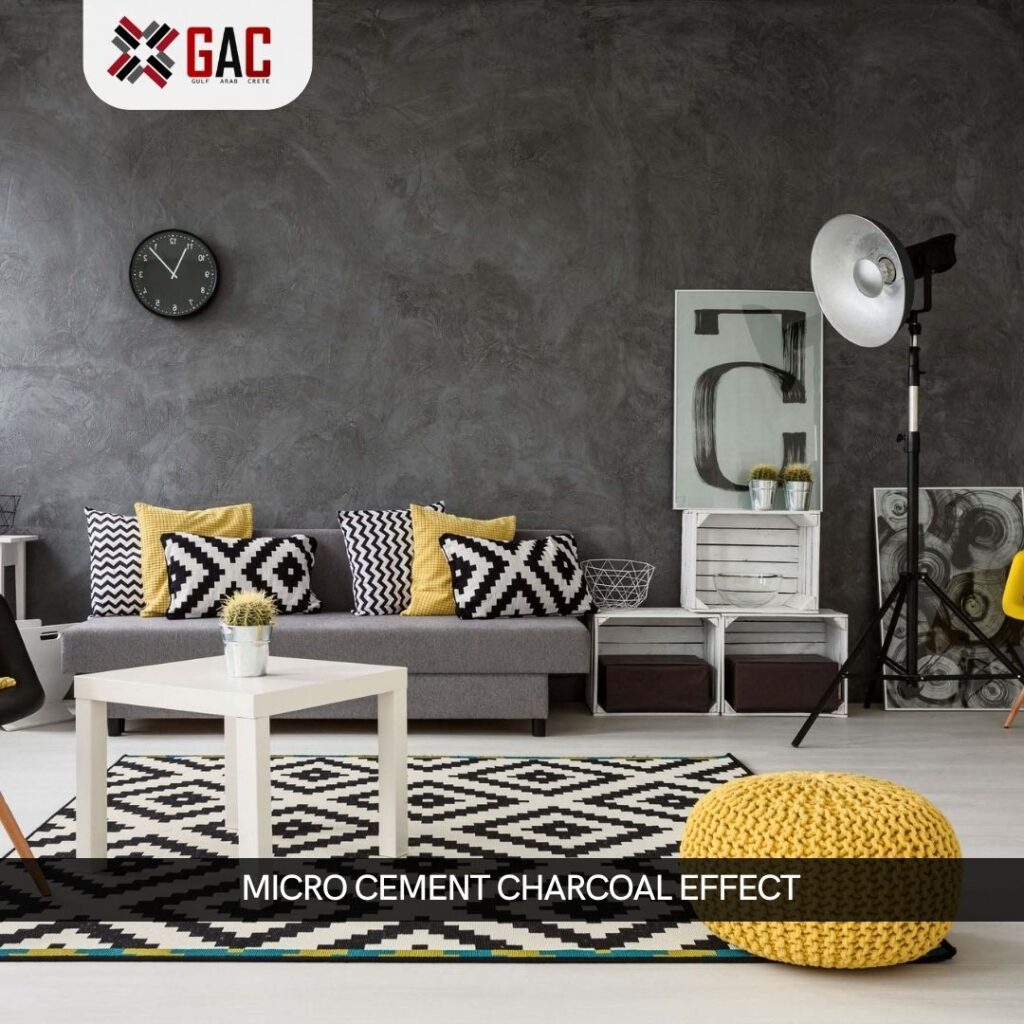Pros of Micro cement:
No Construction Work
Microcement is celebrated for its minimal intrusion during installation. Since it’s a continuous coating applied directly over the existing surface, there’s no need for extensive construction or demolition work. This not only saves time but also eliminates the generation of debris and the associated cleanup. As a result, it imparts a sense of spaciousness to the renovated space.
Excellent Adhesion
Microcement exhibits outstanding adhesion properties. Its super flexibility allows it to adhere well to a wide range of surfaces, including tiles, ceramics, cement, plasterboard, plaster, marble, concrete, and more. This versatility is a key advantage as it means it can be applied over various substrates without issues.
Interior and Exterior Use
Microcement is a versatile coating suitable for both interior and exterior applications. It can transform indoor spaces, such as floors, walls, ceilings, and even furniture, as well as outdoor areas like terraces and swimming pools. However, it’s crucial to select the appropriate type of microcement (bicomponent, monocomponent, or ready-to-use) based on the specific application.
Minimal Structural Impact
A unique feature of micro cement is its minimal thickness, typically ranging between 2 and 3 millimetres. This thin layer ensures that it doesn’t significantly affect the structural load of the building, making it a suitable option for various surfaces.
Durability
Microcement is known for its durability and resistance to wear and tear. Unlike some other coatings, it maintains its integrity over time and doesn’t crack easily. It stands up well to traffic, impacts, scratches, and exposure to sunlight, making it an enduring choice.
Variety of Finishes and Colors
One of the strengths of microcement is its adaptability in achieving diverse textures and finishes, depending on the application and the type of sealant used. Whether you prefer a glossy finish, matte, super matte, satin, or even non-slip and waterproof, microcement offers customization possibilities. Additionally, a wide palette of microcement colors allows for the personalization of surfaces to suit various aesthetics and design preferences.
Waterproof and Anti-slip
Microcement’s waterproofing capabilities make it a popular choice for wet areas, especially in bathrooms. By applying a suitable sealant like Super Sealer 400, microcement can become waterproof, making it ideal for shower trays, sinks, bathtubs, and walls. Furthermore, surfaces coated with microcement can be made anti-slip using products like Super Sealer 800, ensuring safety in environments prone to moisture.
Compatible with Underfloor Heating
The excellent thermal conductivity of microcement makes it a compatible material for use with underfloor heating systems. It efficiently transmits heat, enhancing the comfort and warmth of the space.

Cons of Microcement
It’s essential to note that the drawbacks associated with microcement typically arise from improper installation, use of low-quality materials, or neglecting key application steps. When applied correctly, microcement can deliver on its promises. Here are some common challenges:
Temperature Sensitivity
Microcement’s application is sensitive to temperature conditions. It’s advisable to install microcement within an ambient temperature. Applying it in lower or higher temperatures can result in curing issues, affecting the final finish.
Incorrect Pigment Mixing
Properly mixing the pigment is critical to achieving the desired color consistency. Failure to follow instructions precisely can lead to uneven coloring and visible irregularities on the surface. Adhering to recommended pigment dosages and thorough mixing is essential.
Failure to Follow Installation Steps
The application of microcement involves specific steps that should not be altered. Proper substrate preparation, including conditioning and levelling, is crucial. Different applications, such as floors or walls, require distinct types of microcement, and adhering to these requirements is essential to avoid undesirable results.
Inadequate Substrate Preparation
If the existing substrate is not properly conditioned, leveled, or prepared, it can lead to problems in the future. A sound and well-prepared substrate is essential to ensure a smooth and lasting microcement finish.
Incorrect Repairs
Repairing microcement surfaces, whether due to application errors or damage, should be done correctly. Repairing small areas can lead to noticeable contrasts and inconsistencies. Properly executed repairs are essential to maintain the integrity of the surface.
Cracks and Fissures
Microcement is not inherently prone to cracking, but issues can arise if low-quality materials are used. High-quality microcement products are less likely to develop cracks. Additionally, applying microcement on surfaces with expansion joints, such as concrete floors, can lead to problems if the joints are filled instead of respected.
Issues on Parquet Flooring
The combination of microcement and parquet flooring can be problematic. Parquet is known to expand and contract due to environmental conditions, especially humidity. Applying microcement over parquet can lead to issues as the two materials may not react well together, potentially causing cracking and surface irregularities.
In summary, microcement is a versatile and durable material that offers numerous benefits in both interior and exterior decoration.
However, to fully leverage its advantages and mitigate potential disadvantages, it’s crucial to use high-quality materials and ensure that installation is carried out by experienced professionals who follow the correct application procedures. This careful approach can result in a beautiful and long-lasting microcement finish.






No comment